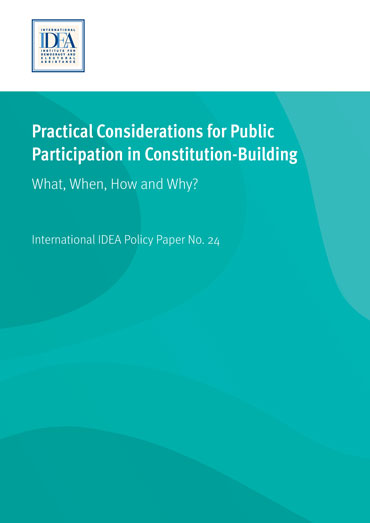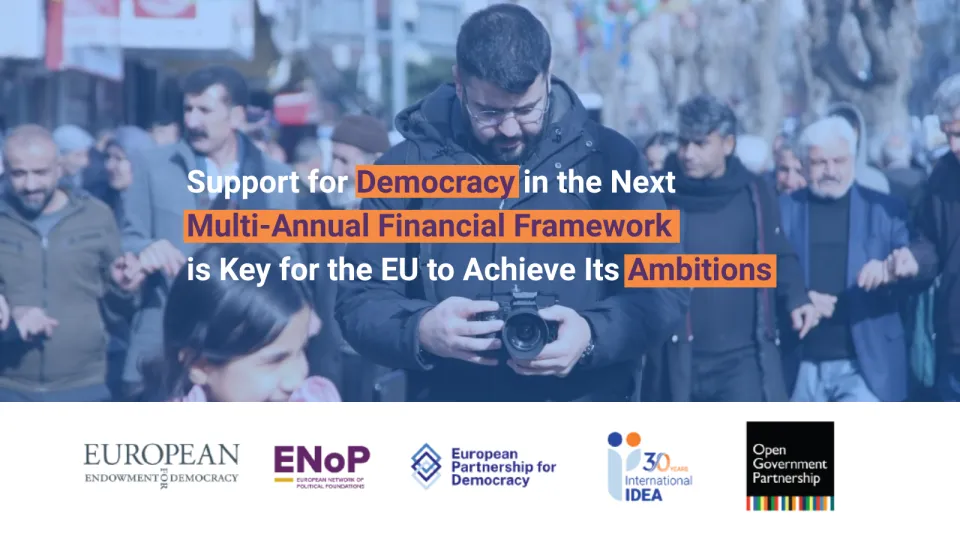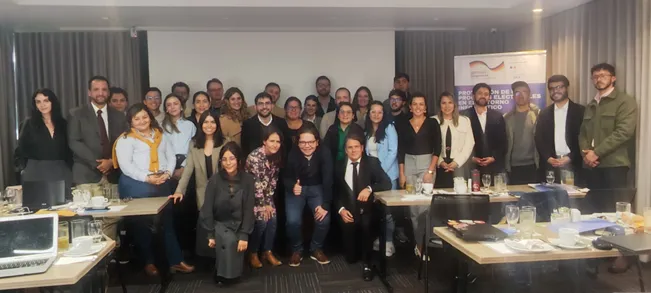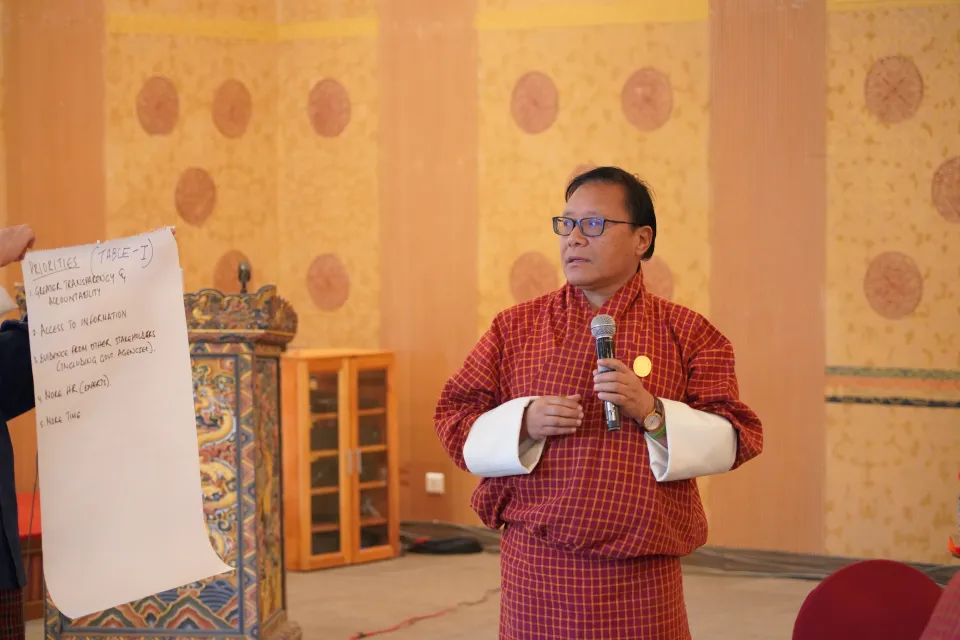Unpacking the forms and functions of public participation in constitution-building: practical guidance for process designers and advocates

Public participation has become a core element of modern constitution-building. The question for leaders charged with designing a constitution-building process today is not whether the public should be engaged but how, when and why to engage the public at different stages of the process.
Robust participation is credited with a range of benefits—from strengthening individual behaviors and attitudes toward democracy, to shaping bargaining dynamics among political decision-makers, to improving constitutional content, and strengthening longer term outcomes for democracy and peace. Yet whether and how participation can achieve these laudable goals is not well understood. Much of what we think we know about participatory constitution-building remains theoretical, and much depends on country context.
Despite this dearth of empirical understanding, decision-makers undertaking a constitution-building project must contend with the key question: what does a robust participation process look like for a particular country, at a particular time, in a particular context? What considerations, principles, and lessons can be learned from comparative experience to help guide decisions? What contextual factors need to be identified, addressed, and incorporated into planning to ensure inclusive, accountable, and responsive engagement across a diverse polity?
International IDEA’s policy paper, “Practical Considerations for Public Participation in Constitution-Building: What, when, how and why?”, aims to assist country-level stakeholders to address these questions and negotiate how the normative and instrumental ‘good’ of participation can be applied at a country level. Authors Erin Houlihan and Sumit Bisarya draw on academic research and comparative modern practice from over 45 countries to unpack the forms and functions of public participation across different stages of the constitution building process. They consider whether and how various approaches to participation can support a range of particular aims—such as initiating a constitutional reform project, contributing to and reviewing the content of the text, fostering legitimacy, approving the final draft, and influencing the dynamics of the political negotiations that are foundational to a successful constitution-building endeavor.
The policy paper first considers contextual factors that must be taken into account when developing a participatory process.

These range from examining the roots of the constitutional reform project, to identifying stakeholders, assessing the existing legal and institutional framework, reviewing the security context, exploring public experience with political engagement, and analysing the availability of resources. It then considers the what, when and how of participation. Based on comparative practice, the paper unpacks the potential roles of the public into four categories: as initiators of the constitutional reform project, electors to the constitution making body, contributors of ideas on process design and constitutional content, and approvers (or rejectors) of the final constitutional text. To play these roles, the paper also notes the importance of people being supported as learners through civic education on both the process itself and constitutional concepts and design options.
The paper then maps these various roles played by the public onto the stages of the constitution building process. While no process occurs in neatly defined stages, and processes are rarely linear, an idealized model involves initiation; agenda-setting and process design; drafting, deliberation and decision-making; and approval of the text. Empirical research and comparative experience indicate that both the forms and functions of public participation operate differently across these stages, and can be instrumentalized to support both stage-specific and broader aims. Various types of participation—which include voting in referenda, electing representatives, and being consulted in a variety of ways on a range of both process and design issues—provide opportunities for the public to share their views as a normative good. They also, importantly, provide information for decision-makers about public preferences to help guide decisions and shape the dynamics of the arguing and bargaining process.
The third part of the paper examines this why element of participation. It considers what public engagement can potentially achieve, with a focus on whether a how public inputs can influence the political negotiation process as the text is developed, deliberated and approved. Constitution-building always takes place in a contested political arena and, in democratic contexts, outcomes are inevitably the result of negotiations. Public participation is not a substitute for political consensus among a plurality of decision-makers, but it can be designed in ways that complement, reinforce, and help shape political consensus building. Drawing on experience from over 45 countries—from Chile to South Africa, Mongolia to Kenya, Iceland to Egypt—the paper examines how this has been done, and the relative successes and challenges faced, in various contexts.
But what are process designers and civil society advocates to make of this comparative information and empirical data? The fourth part of the paper provides some guiding considerations, assembled from recent cases, to help decision makers along the way. Of course, it is not possible to effectively account for all variables that may contribute to the overall efficacy of a participatory constitution-building process or its immediate and longer-term outcomes. However, the paper provides practical examples and identifies key questions to help guide the planning process and flag potential pitfalls to mitigate.
The paper closes with brief concluding remarks in which the authors emphasize that, while public participation is an inevitable and invaluable element of modern constitution-building, it is not a panacea. Participation is foundational to the idea that a constitution is ‘not an act of government, but an act of the people constituting a government’ (Paine 1791). Yet a people-driven process that does not also secure sufficient consensus among elites will rarely come to successful conclusion—whether to enact a new or amended constitution or for its effective implementation. The task of designing a participation process in a way that complements and balances such consensus building is a complex and delicate task.




